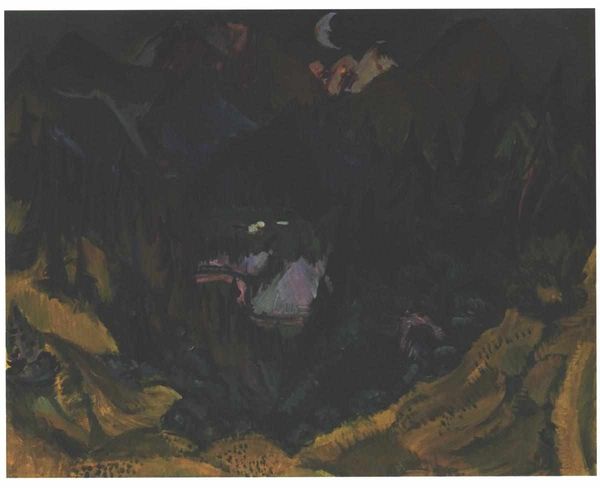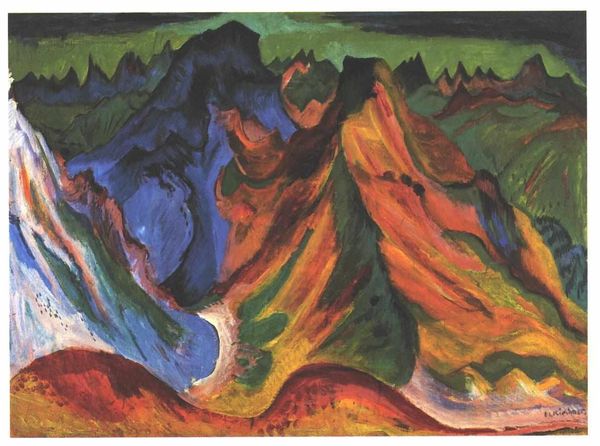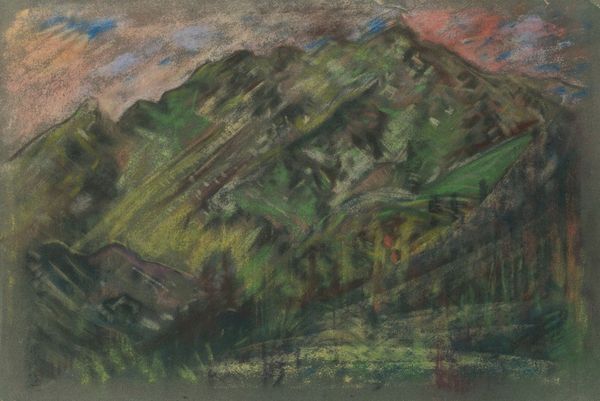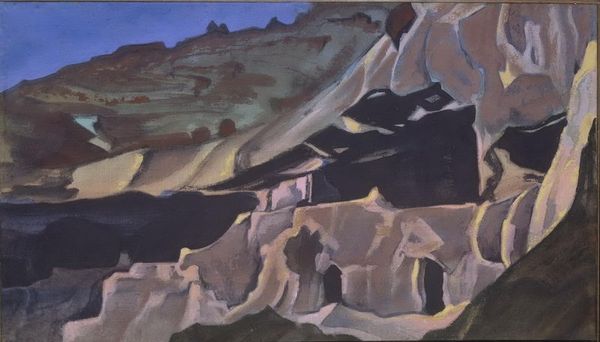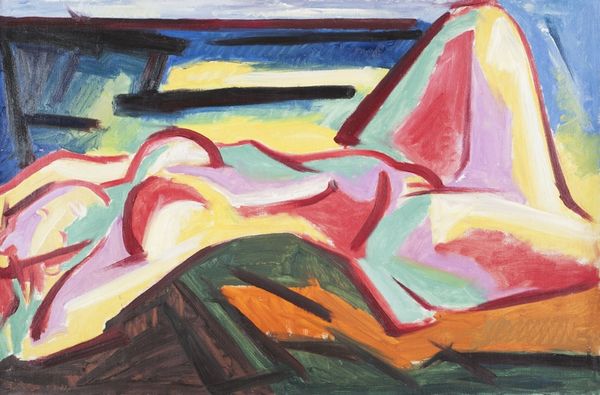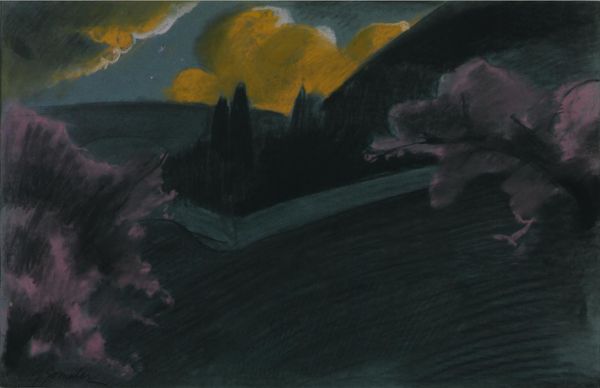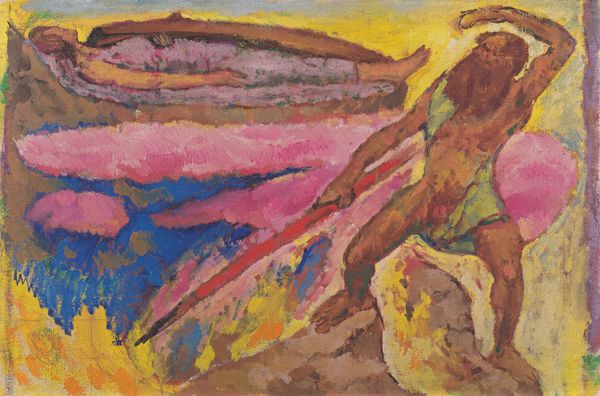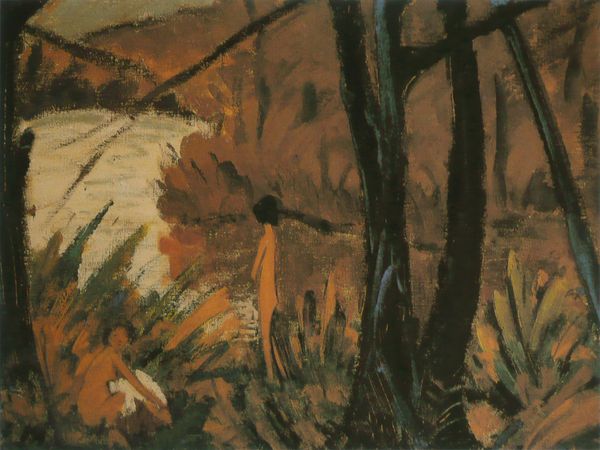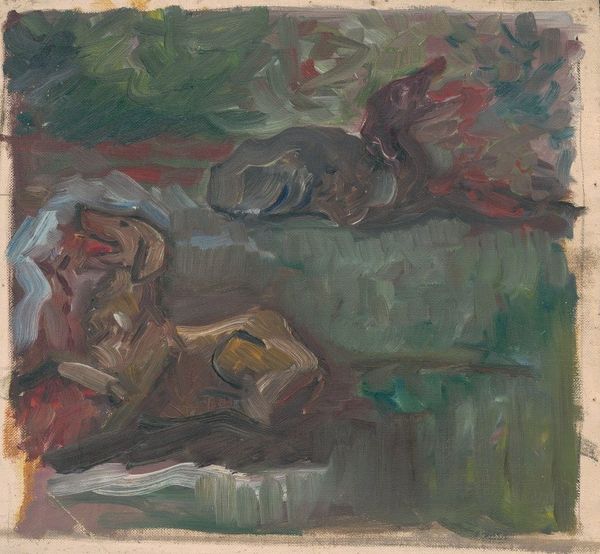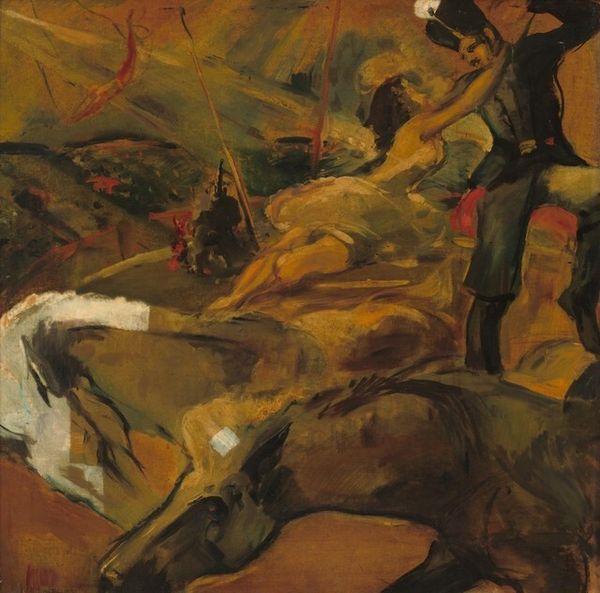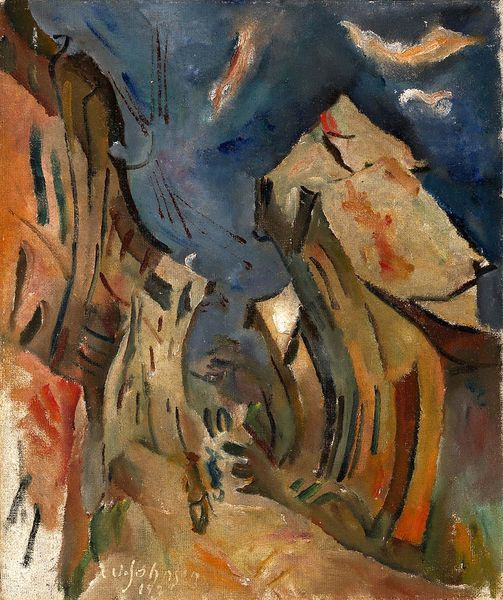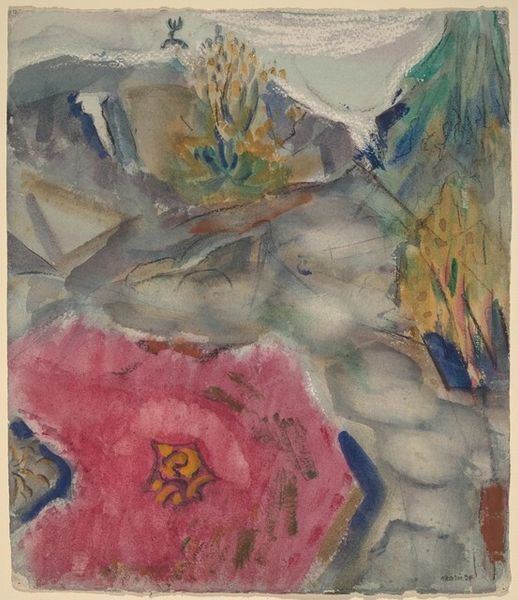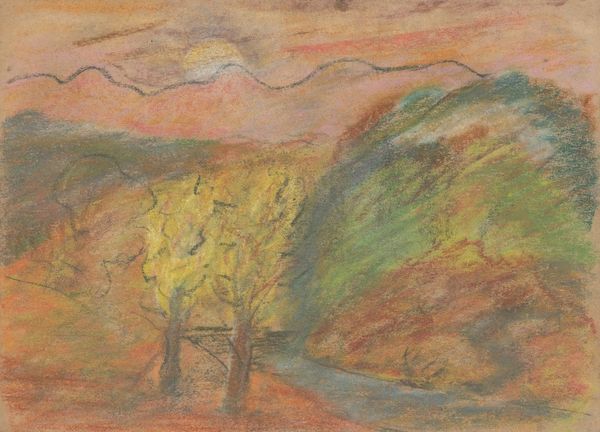
painting, plein-air
#
painting
#
plein-air
#
landscape
#
german-expressionism
#
mountain
#
expressionism
Copyright: Public domain
Editor: Here we have "Stafelalp at Moon Light," a painting by Ernst Ludwig Kirchner. I understand it's considered plein-air, though the effect is far from calm. The jagged mountains and strange coloration give it an almost feverish quality. What symbols or images jump out at you? Curator: The enduring symbol here, even beyond the mountain, is light itself, struggling against the encroaching darkness. Notice how the mountain peaks, flushed with fiery colors, seem to push upwards, striving for illumination. Think about the cultural weight of mountains themselves – places of spiritual seeking, tests of endurance. They become almost totemic here. What does the moonlight evoke for you, in this context? Editor: I hadn’t considered the light as an active element, more like a passive mood setter. Now, I see it’s creating this sense of yearning, maybe? The darkness seems to threaten the small figures at the bottom too. Curator: Precisely! And are they figures, or shadows? Are they ascending or descending? Kirchner asks us to consider what happens when clarity blurs. The uncertainty itself becomes meaningful. Consider what German Expressionism inherited from Romanticism, and how they depart from it. What do you think he wants us to remember, and what does he ask us to forget? Editor: I see that interplay more clearly now – how it invites questions instead of dictating answers. It moves past observation into… experience? Curator: Indeed. Kirchner isn't just painting a landscape; he's conjuring a visceral state of being. He wants you to feel that striving, that uncertainty. It reveals an artist wrestling with both beauty and the unsettling unknown. Editor: Thanks for opening my eyes to the push and pull within the painting. It's far more complex and engaging than I initially realized!
Comments
No comments
Be the first to comment and join the conversation on the ultimate creative platform.
